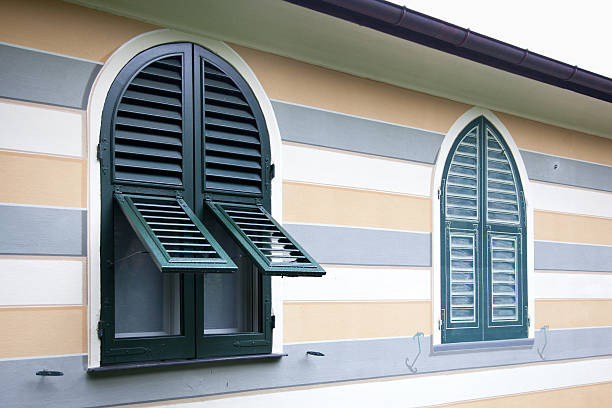Trompe l'Oeil Wallpaper: The Art of Optical Illusion in Home Decor
Imagine stepping into a room where the walls seem to open up to a lush garden, or where intricate architectural details appear to pop out in 3D. This isn't magic, but the captivating world of trompe l'oeil wallpaper. A French term meaning to deceive the eye, trompe l'oeil is revolutionizing interior design, offering homeowners a unique way to transform their spaces with stunning visual tricks.

In the modern era, trompe l’oeil has found new life through wallpaper. Advanced printing technologies now allow for the creation of hyper-realistic images that can transform any wall into a work of art. From faux brickwork to sweeping landscapes, the possibilities are as boundless as one’s imagination.
Beyond Flat Surfaces: Adding Depth and Dimension
One of the most striking aspects of trompe l’oeil wallpaper is its ability to add perceived depth to a room. In smaller spaces, this can be particularly impactful. A wallpaper featuring a long corridor or an open window can create the illusion of extended space, making a cramped room feel more expansive and airy.
Designers are also using trompe l’oeil to add architectural interest to plain walls. Intricate moldings, wainscoting, and even entire facades can be recreated with astonishing realism. This allows homeowners to achieve a high-end, custom look without the expense and permanence of actual construction.
Bringing the Outdoors In: Nature-Inspired Illusions
One of the most popular trends in trompe l’oeil wallpaper is the recreation of natural environments. Lush forests, tropical beaches, and serene meadows can now be brought indoors, creating a sense of escape within one’s own home. This trend aligns with the growing desire for biophilic design, which seeks to connect interior spaces with nature.
These nature-inspired designs go beyond simple scenic views. Some wallpapers recreate the texture of tree bark or the delicate veining of leaves with such precision that they’re nearly indistinguishable from the real thing. This level of detail not only fools the eye but can also evoke a tactile response, enriching the sensory experience of a space.
Customization and Personalization
The digital nature of modern trompe l’oeil wallpaper production allows for unprecedented levels of customization. Homeowners can work with designers to create bespoke murals that reflect their personal style or incorporate elements of significance to them. Family photographs, favorite artworks, or even imaginary landscapes can be transformed into larger-than-life wall coverings.
This customization extends to scale and color as well. A design can be adjusted to fit perfectly within a specific space, and colors can be tweaked to complement existing decor. This flexibility makes trompe l’oeil wallpaper an incredibly versatile design tool, suitable for both subtle accents and bold statements.
Technical Considerations and Installation
While trompe l’oeil wallpaper offers exciting design possibilities, it does require careful consideration and skilled installation. The effectiveness of the illusion often depends on precise alignment and seamless application. Professional installation is usually recommended to ensure the best results.
Lighting also plays a crucial role in the success of trompe l’oeil designs. The right illumination can enhance the three-dimensional effect, while poor lighting can diminish the impact. Designers often work closely with lighting specialists to create the perfect ambiance that complements and enhances the wallpaper’s illusory effects.
The Psychology of Optical Illusions in Interior Design
The use of trompe l’oeil in home decor goes beyond mere aesthetics. It can have a profound impact on how we perceive and interact with our living spaces. Studies in environmental psychology suggest that our surroundings significantly influence our mood and behavior. Trompe l’oeil wallpaper, with its ability to create the illusion of expanded space or bring elements of nature indoors, can potentially reduce stress and increase feelings of well-being.
Moreover, these optical illusions can serve as conversation starters and points of interest in a home. They engage viewers, encouraging closer inspection and interaction with the space. This engagement can make rooms feel more dynamic and alive, transforming them from passive backgrounds into active elements of the home’s character.
Sustainability and Practicality
As homeowners become increasingly conscious of their environmental impact, trompe l’oeil wallpaper offers an eco-friendly alternative to extensive remodeling or the use of rare materials. Want the look of exotic wood paneling without contributing to deforestation? A high-quality trompe l’oeil wallpaper can provide the same visual impact with a fraction of the environmental cost.
Additionally, these wallpapers can be more practical than their real counterparts in certain situations. A trompe l’oeil brick wall, for instance, doesn’t require the structural support or insulation considerations of actual brickwork. This makes it possible to achieve looks that might otherwise be impractical or impossible in some spaces.
The Future of Trompe l’Oeil in Home Design
As technology continues to advance, we can expect even more innovative applications of trompe l’oeil in interior design. Augmented reality could potentially allow for dynamic wallpapers that change with the time of day or respond to the occupants’ movements. The integration of smart home technology might enable wallpapers that serve functional purposes beyond decoration, such as displaying information or controlling ambient lighting.
The rise of trompe l’oeil wallpaper represents a exciting convergence of traditional artistry and modern technology. It offers homeowners and designers a powerful tool to reshape spaces, tell stories, and create immersive environments within the home. As this trend continues to evolve, it promises to push the boundaries of what’s possible in interior design, blurring the lines between reality and illusion in our living spaces.






